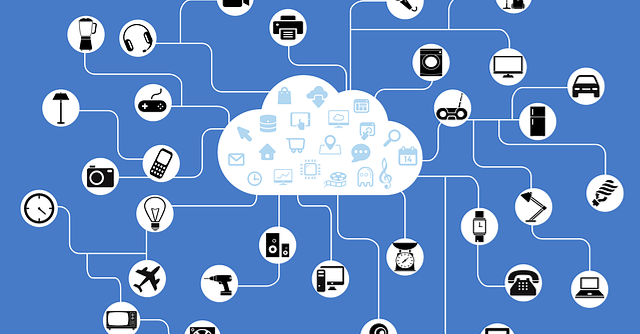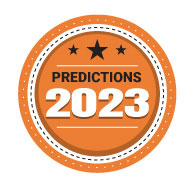
Five IoT trends to watch in 2023


 The world’s first internet of things (IoT) device was connected to Coca-Cola vending machine at Carnegie Melon University in the early 1980s. It was installed by a group of students from the university to track if the machine was out of the beverage. However, it was only in 1999 when computer scientist Kevin Ashton coined the term ‘IoT’, referring to tracking items through a supply chain using radio-frequency identification (RFID) chips.
The world’s first internet of things (IoT) device was connected to Coca-Cola vending machine at Carnegie Melon University in the early 1980s. It was installed by a group of students from the university to track if the machine was out of the beverage. However, it was only in 1999 when computer scientist Kevin Ashton coined the term ‘IoT’, referring to tracking items through a supply chain using radio-frequency identification (RFID) chips.
The technology, which is a network of connected devices that ‘communicate’ with each other and the cloud, has now grown leaps and bounds. As per the software review platform Finance Online, the number of IoT connected devices will cross the 25 billion mark. It received a major boost in the Covid-19 pandemic era, owing to the increased demand for data insights and remote access. The ‘IoT Spotlight Report 2020’ by telecom company Vodafone revealed that at least 87% of surveyed respondents accepted that IoT has positively impacted their core business strategy.
IoT holds a great potential even in the post-pandemic era, especially in combination with technologies like artificial intelligence (AI) and 5G. Moreover, the trend is expected to continue in the coming year. So, here are some of the IoT trends to watch for in 2023:

IoT in healthcare
IoT in healthcare has several applications including smart sensor monitoring, collection of patient data, and medical device integration. Internet of medical things (IoMT) more aptly defines it, referring to a network of internet-connected medical devices and infrastructure. There has been a growing demand for connected medical devices and remote patient care, which is currently driving the IoT market growth. This need has multiplied after the Covid-19 pandemic.
A June 2021 report by market research organisation Fortune Business Insights revealed that the IoT in the healthcare market will grow from $89.07 billion in 2021 to $446.52 billion in 2028 at a CAGR of 25.9% in the period. The developments in communication technology and the adoption of 5G network will further enhance the telehealth industry and further improve market growth in 2023.

AIoT
As artificial intelligence (AI) continues to have its moment in Sun, its convergence with IoT makes it capable of solving a range of problems across industry verticals. Referred to as AIoT (artificial intelligence of things), here IoT adds value to AI by offering connectivity, data exchange, and signalling, while AI lends improved decision-making prowess.
AIoT’s deeper integration within businesses would lead to valuable solutions. This technology will optimise system and network operations, and extract valuable insights from the industry data using analytics-enabled decision-making processes.

As per a July 2022 report by market research firm Research and Market, the global AIoT market is expected to reach $83.6 billion by 2027 while growing at 39.1% CAGR. Some of its prominent fields of application include data services, asset management, process enhancement, and industrial automation among others, the report said.
Increased focus on security
IoT and security have a complicated relationship. While on one hand IoT devices make our daily work more convenient, they also expose us to various forms of cyberattacks. In 2023, the number of IoT devices will increase, so will the risk of cybersecurity attacks.

Against this backdrop, in the US, the White House National Security Council, earlier this year, issued a whitepaper that outlined recommendations for cybersecurity labeling for consumer IoT products. In India, the Telecommunications Engineering Centre (TEC) and the Department of Telecommunication released a report titled “Code of Practice for Securing Consumer Internet of Things (IoT)” in January 2022. This report gives out guidelines to help secure consumer IoT devices and manage vulnerabilities. It is mainly directed toward IoT device manufacturers, application developers, and service providers.
Industrial applications
IoT offers better performance, efficiency, a secure working environment, and lower costs in an industrial setting. For these reasons, IIoT is heavily employed in sectors like production, commercial, and healthcare industries. Going ahead too, IoT will continue supporting productive automated industries. Enterprise software built on IoT will replace manual operations in the industry with autonomous machines. Other applications of IoT devices in industrial settings include error prevention, advanced analytics, and efficient monitoring, as well as in the product design and testing phases.

As per research firm Expert Research Market, for the forecast period of 2023-2028, the industrial IoT market is expected to grow at a CAGR of 6.78% to reach $113.3 billion by 2027.
Impact of 5G
The 5G services were launched in India in October this year. The 5G network will enable newer pricing models and greater adoption of wireless connectivity in a range of IoT applications. The 5G technology extends benefits like increased bandwidth, low latency, and high reliability. For these reasons, 5G will enable new use cases in visual inspection, remote monitoring, and autonomous operations in large-scale environments.

